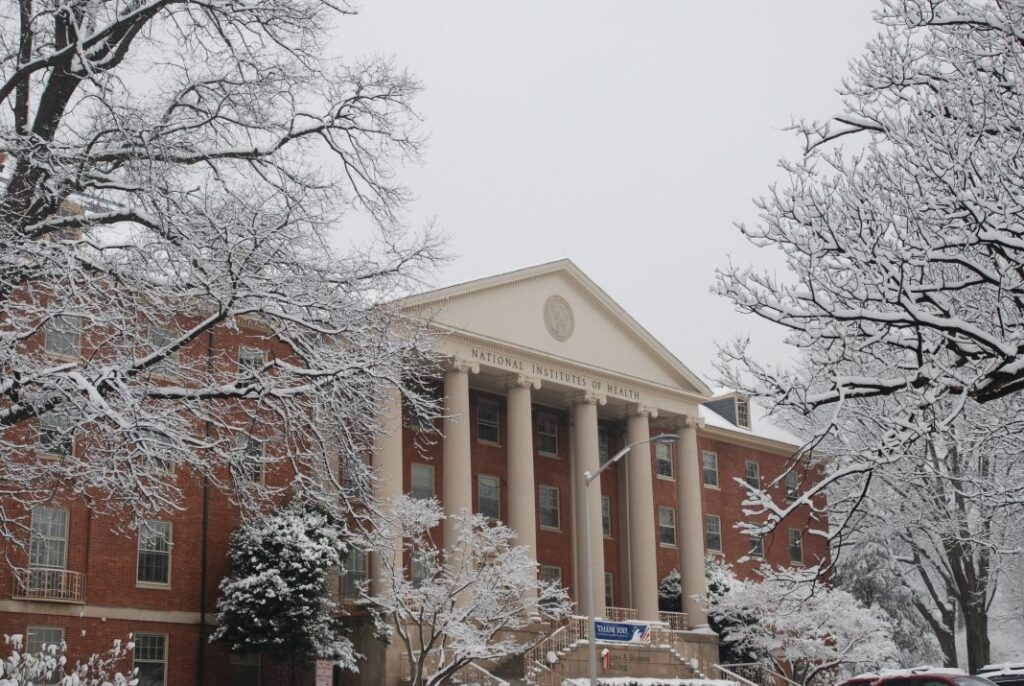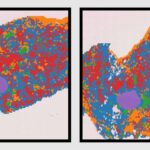Several big-name biotech tools companies saw their shares slide by double digits in the week since the NIH announced it would cut its funding of indirect costs in the basic research grants it awards to researchers
In a directive issued by NIH’s Director’s office, now led by Acting Director Matthew J. Memoli, the agency said it will cap reimbursement for research facilities and administrative expenses at 15% across all NIH grants effective immediately.
The directive has been blocked for now through a temporary restraining order issued February 10 by U.S. District Court Judge Angel Kelley of the District of Massachusetts, nominated in 2021 by President Joe Biden, following a lawsuit (1:25-cv-10338) filed by attorneys general from 22 states. Kelley also issued a restraining order expanding the measure beyond the 22 states following another lawsuit (25-CV-10340) filed against the NIH by the Association of American Medical Colleges. A third lawsuit (1:25-cv-10346) has been filed by 13 universities and colleges as well as the Association of American Universities, the American Council on Education, and the Association of Public and Land-Grant Universities.
If the directive survives the court challenges, it will be essentially a cut for most labs since, according to the agency, indirect costs have averaged between 27% and 28%, with many organizations charging the agency indirect rates of more than 50% and in some cases, more than 60%. The NIH contrasted those averages with the lower maximum indirect cost rates of numerous private foundations ranging from 10% to 15%.
As of February 10, according to the NIH website, Johns Hopkins University received the largest amount of NIH grant funding, $93,528,875. Next highest were the University of California, San Francisco (UCSF; $90,493,841), University of California, Los Angeles (UCLA; $89,429,142), University of North Carolina, Chapel Hill ($86,706,986), and the Fred Hutchison Cancer Center in Seattle ($85,071,556).
The NIH projected the cut will save $4 billion during the current federal fiscal year, which ends September 30. That’s nearly half of the $9 billion that the NIH said it set aside for overhead through the indirect cost rate—just over 25% of the more than $35 billion spent by the agency on almost 50,000 competitive grants to more than 300,000 researchers at more than 2,500 universities, medical schools, and other research institutions across all 50 states and Washington, D.C.
“When applying the ~$4B decrease to the 2025 core NIH budget of ~$49B, this would represent an ~8% cut to the total NIH budget,” J.P. Morgan analyst Rachel Vatnsdal wrote February 9 in a research note. “While questions remain on the long-term implications this may have on research funding, we believe that this announcement presents an incremental headwind to the life science tools sector, particularly those with larger NIH exposure.”
Trump is expected to propose a budget decrease for NIH, Vatnsdal wrote, citing his actions during the first year of his first term in 2017. At the time, Trump proposed a budget for FY 2018 that cut NIH spending by 22%—only to see Congress ultimately approve a spending plan that raised the agency’s funding by 9%. While Trump had Republican majorities in the U.S. House of Representatives and Senate, GOP lawmakers then were more likely to differ with the president on policy questions, including NIH funding—which in the years before COVID-19 commanded support from both sides of the proverbial political aisle.
Three companies, 20%+ exposure
J.P. Morgan identified three biotech tools companies with the highest percentages of exposure to NIH indirect funding: Sequencing giant Illumina (NASDAQ: ILMN) with 25%, and two companies with 20% exposure—Illumina rival Pacific Biosciences of California (PacBio; NASDAQ: PACB); and 10x Genomics (NASDAQ: TXG), a leading provider of single cell, spatial, and in situ products and technologies.
Between February 6, the day before the NIH issued its directive, and February 11:
- Illumina shares tumbled 18% from $122.80 to $100.68, then dipped another 0.4%, finishing the week at $100.24.
- PacBio shares fell 17% from $1.60 to $1.33—before more than bouncing back, climbing 39% to $1.85 by Friday.
- 10x shares sunk 13% from $14.65 to $11.82 but rebounded 4% to $12.31 at Friday’s closing bell.
Illumina CEO Jacob Thaysen, PhD, acknowledged the potential for disruption from the second Trump administration in releasing Q4 and 2024 results a day before the NIH announcement.
“We are closely monitoring the evolving circumstances in Washington, particularly as it relates to research funding,” Thaysen told analysts February 6 on the company’s quarterly earnings call. “Ultimately, we are committed to supporting our customers globally and the important work they do to advance scientific discovery using the powers of genomics.”
Illumina shares fell 16% earlier this month. Investors reacted to China placing the company on its “Unreliable Entity List” (UEL), and to Illumina releasing mixed fourth-quarter and full-year 2024 results. The company returned to profitability during Q4 with a net income of $187 million, up from a $176 million net loss a year earlier, on revenue that dipped nearly 2% from $1.122 billion to $1.104 billion. For the full year, Illumina’s net loss grew 5% from $1.161 billion to $1.223 billion on revenue that fell 3% from $4.505 billion to $4.372 billion.
PacBio and 10x bounced back due to factors beyond the NIH, namely earnings reports that delivered to investors both bad news and good about the companies.
10x finished the fourth quarter of 2024 with a net loss of $49.028 million, up 0.2% from the net loss of $48.952 in Q4 2023, on revenue that fell 10% year-over-year, from $183.979 million to $165.021 million. For all of 2024, 10x cut its net loss 28% from $255.099 million to $182.627 million, on revenue that dipped 1% from $618.727 million to $610.785 million.
“Significant exposure”
Leerink Partners analyst Puneet Souda acknowledged 10x’s positives—but focused instead on negatives Thursday in downgrading the company’s shares from “Outperform” to “Market Perform,” and slashing by more than half his 12-month price target for the company’s stock, from $25 to $12.
“Despite having the market leading position in the single-cell market and a growing position in the spatial market, TXG’s business has significant exposure to the academic end-market, especially in the U.S.,” Souda wrote in a research note.
Souda said U.S. academic research customers accounted for about 40% of 10x’s revenue mix in cautioning that the NIH indirect cost cap “poses significant risk on academic institutions, which is driving a change in researchers’ behavior towards conversation of capital.”
Speaking with GEN Edge recently, 10x co-founder and CEO Serge Saxonov, PhD, identified as a priority for 2025 stepping up marketing of its offerings to biopharma business customers, where the company sees opportunity for sharp growth.
“Right now, biopharma is only about 15% to 20% of our business. But we believe based on our market analysis and conversations with customers that it should be more like 50%. There’s a lot of potential for us to grow,” Saxonov asserted.
On its most recent quarterly earnings call Thursday, 10x CFO Adam Taich said the company’s investor guidance accounted for a $7 million cut in NIH direct funding and was made before the announcement about indirect funding—to which 10x is “20% to 25%” exposed, he said. Were such a cut to be combined with the actual indirect funding cap, he said, 10x would be looking at “roughly a $10 million to $15 million dollar impact on our revenue.”
“Worse than we initially feared”
“We believe the impact to TXG will be worse than we initially feared, with academics cutting spending drastically (-80% on instruments) and no clarity as to when NIH headwinds will be resolved,” Souda warned.
PacBio cited the impact of the NIH indirect funding cap, plus macroeconomic challenges consistent with 2024—such as extended sales cycles, especially for higher-end instruments like its Revio™ long-read sequencing system—for pushing back its projected return to positive cash flow from the end of 2026 to the end of 2027, and projecting 2025 revenues of between $155 million and $170 million.
The midpoint of that revenue range—approximately $163 million—is 13% below the $186 million forecast from a consensus of analysts cited by Jefferies analyst Tycho Peterson.
While PacBio has not quantified how much the NIH indirect cap is expected to impact revenues, CEO Christian Henry answered a question from Peterson by disclosing that PacBio has lowered its projection of first-quarter “call-through” revenues from customers who contact the company (vs. being cold-called) from about $240,000 in the fourth quarter to a range of “low-$200s to mid-$200,000s.
European, clinical growth
“That’s an area where you could see some funding freezes or pauses—slow activity,” Henry said. “We’re seeing very exciting growth in Europe that is offsetting some of the risk in the Americas. And we’re also seeing a pretty significant expansion in the clinical side of our business, which isn’t funded by NIH sources.”
PacBio finished the fourth quarter in the black with $3.571 million in net income, swinging from an $82.018 million net loss in Q4 2023, on revenue that tumbled 33% year-over-year to $39.224 million from $58.357 million. For all of 2024, PacBio’s net loss grew about 1% to $308.651 million from $306.735 million in 2023, on revenue that shrunk 26% to $136.149 million from $183.872 million.
“While we faced challenges in 2024, it was a pivotal year in strengthening our business and advancing our product portfolio,” Henry told analysts.
Among bright spots during Q4: PacBio began shipping to customers its Vega™ benchtop sequencing platform, delivering seven units ahead of schedule; and launched SPRQ, an improved sequencing chemistry for its Revio® long-read sequencing system, paired with a SMRT Link software upgrade. PacBio delivered 23 Revio sequencing systems during the fourth quarter, part of the 97 it shipped to customers in 2024—about half of Revio’s total of nearly 200 customers.
“Although we are disappointed by ongoing challenges in this capex [capital expenditure] environment, we are encouraged by early days of the Vega ramp and potential runway to double-digit growth,” Peterson wrote in a research note while CF [cash flow] breakeven was delayed to ’27, we are upbeat on the margin trajectory and improving balance sheet, and continue to see PACB as worthy of a flyer now that expectations have been reset.”
Leaders and laggards
- AnaptysBio (ANAB) shares surged 71% over three days after the company announced statistically significant Week 12 data from the global 424-patient Phase IIb RENOIR trial (NCT06041269) assessing rosnilimab, a depleter and agonist of PD-1+ T cells, for moderate-to-severe rheumatoid arthritis (RA). Anaptys said rosnilimab achieved statistical significance on the trial’s primary endpoint of mean change from baseline disease activity score-28 joints (DAS-28) C-Reactive Protein (CRP) score across all three rosnilimab doses vs. placebo at week 12, as well as on key secondary endpoints at week 12 including American College of Rheumatology (ACR) response scores of ACR20 (20% improvement in arthritis symptoms), ACR50 (50% improvement), and clinical disease activity index-low disease activity (CDAI LDA) measures. Shares zoomed from $12.38 February 11 to $21.22 Friday.
- Firefly Neuroscience (AIFF) shares nearly quintupled, rocketing 399% over three days from $3.10 February 11 to $15.46 on Thursday, after the company announced it was accepted into the NVIDIA Connect program of Nvidia (NASDAQ: NVDA). Firefly said the program’s resources will help it build a proprietary foundation model of the human brain using its FDA-cleared Brain Network Analytics (BNA™) technology platform. BNA applies AI toward diagnostic and treatment monitoring methods for conditions such as depression, dementia, anxiety disorders, concussions, and ADHD. NVIDIA Connect is a free program designed to help software development companies and service providers shorten time to market through tailored development resources, technical training and guidance, and preferred pricing on NVIDIA technologies. Firefly shares skidded 42% Friday to $9.01 as investors cashed in profits.
- Kala Bio (NASDAQ: KALA) shares nosedived 32% from $10.88 to $7.44 Wednesday after the company announced the resignation of Mark Iwicki as CEO—he continues to serve as chair of the board of directors—and the appointment of Todd Bazemore, the company’s president and COO, as interim CEO effective immediately. Bazemore has served as Kala’s president since December 2021 and as COO since November 2017. The change of leadership comes as Kala is expected during the second quarter to report topline data from the Phase IIb CHASE trial (NCT05727878) assessing its lead candidate KPI-012 in persistent corneal epithelial defect. Kala is also exploring KPI-012 in additional rare, front-of-the-eye diseases, including limbal stem cell deficiency and other corneal diseases. Also in Kala’s pipeline is KPI-014, a preclinical program to evaluate the utility of its MSC-S platform for inherited retinal degenerative diseases, for which preclinical studies have begun in retinal degenerative conditions that include retinitis pigmentosa and Stargardt disease.



